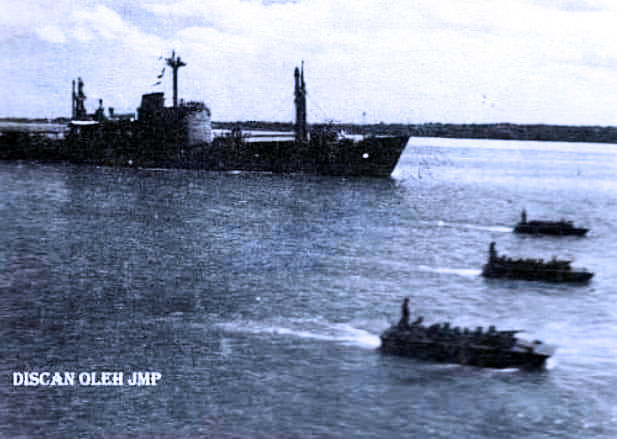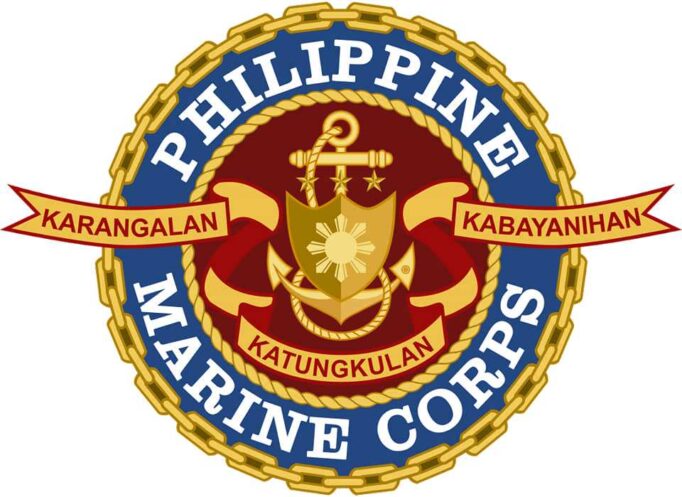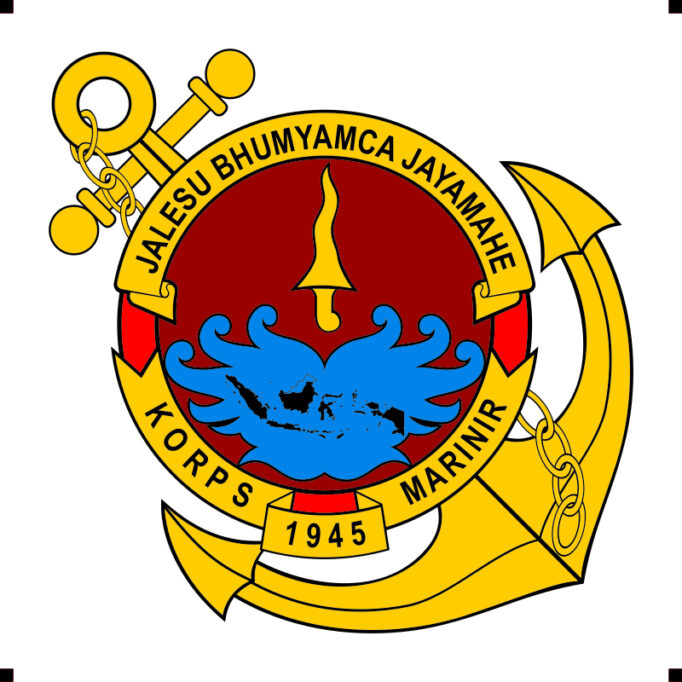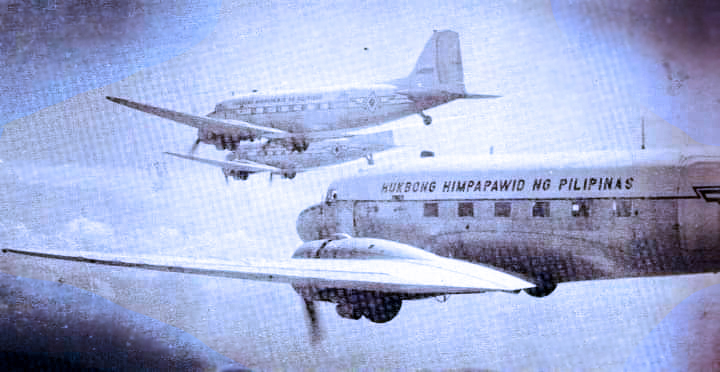THE BEGINNINGS
On 21-June-1951, a Treaty of Friendship between the Philippines and Indonesia was signed during the administration of President Elpidio R Quirino. Seven years later, the pillars were strengthened with the signing of the Cultural Agreement between the two countries on 29-April-1959 during the term of President Carlos P Garcia, two significant accords that would pave the way for the formulation of a Naval agreement on 30-January-1961.
PAF GOODWILL MISSION
The treaty of Friendship was further solidified with the First Philippine Air Force (PAF) Goodwill Mission to Indonesia from 26 May to 02-June-1953 led by the PAF Commander COL Benito Nicano Ebuen PAF.
The PAF Contingent consisted of a 30-man team with 8 North American F-51D Mustang Fighters, 1 Douglas C-47, and 1 PBY Catalina. The Flight Commander was PAF Chief of Air Staff COL Tomas Tirona.
The Group was scheduled to depart Nichols Air Base on 27-May-1953 but departed on Tuesday 26 May to accept the invitation of then British Royal Air Force Far East Chief, Air Chief Marshall Sir Clifford Sanderson, RAF based in Singapore.
The Mustangs and C-47 would proceed first to Singapore and then to Indonesia, while the PBY Catalina with MAJ Luis Mirasol PAF Flight Surgeon headed directly to Jakarta as the advance party.
A tour of the TNI-AU Air Bases, Army Camps, and Naval Stations were provided to the group apart from the parade and review, and courtesy call to the Indonesian Officials. The visit highlights the long-term good bilateral relations of the Philippines and Indonesia.
A FRIENDS RESPONSE IN TIME OF NEED
In March 1963, seven Philippine Air Force Douglas C-47 Skytrain transported relief goods and brought in a 20-man Philippine Air Force Medical Team led by COL Jesus Azurin PAF and Department of Health Contingent led by Dr Rausoro Cabailo to assist the victims affected by the eruption of Mount Agung in Bali, Indonesia with its 18 men and women, and 36 PAF Pilots and Flight Crew involved in the operation.
THE PHILIPPINE NAVY–THE ANGKATAN LAUT REPUBLIC OF INDONESIA Joint Patrol Agreement
The Joint Patrol Agreement was signed and put into effect on 25-July-1963 though the formulation of the agreement begun in January 1961. The opening steps on the JPA began on 10-April-1961 when the Commander of the Naval Operating Forces Philippine Navy and Commander, Task Force 31 made a visit to Tarakan, Indonesia with the primary purpose of opening radio contacts at the Indonesia Naval Station in Tarakan and the PN Naval Station in Batu-Batu. The PN contingent was warmly received by no less than the Chief of Naval Operations of Indonesia.
The visit resulted in the essential exchange of information and intelligence; designated patrol areas for both Navies against smuggling and piracy; improvement of communications on the aforementioned naval stations; and assisting the repatriation of illegal entrants of both countries.
By 1962, further improvements to correct the operational weak points of the Patrol Agreement were made, and in July 1963, the Joint Patrol Agreement was finally signed by the Flag Officer in Command (FOIC, PN) and the Chief of Naval Operations of Indonesia.
Also present during the signing held in Manila were the Operational Commanders responsible for the area of Combined Task Force 31 with its Commander of the Kodamar VII-Indonesian Navy.
Four years later, in 1967, after the end of the Confrontation, both Indonesia and the Philippines decided to reactivate the JPA with the the establishment of radio contacts between Batu-Batu Naval Station and Kodamar VII in the City of Manado.
By June of that year, the Vice Commander of the Philippine Navy and the Assistant Chief of Naval Staff For Intelligence (N-2) representing FOIC, PN visited Jakarta and was reciprocated by the Indonesian CNO when it visited Manila the following year. These visits show the Two Navies’ positivity on the JPA and the full implementation of the agreement’s Implementing Rules and Regulations (IRR).
In September 1965, Border Crossing Stations were established in Marore and Miangas, Northern Sulawesi, Indonesia and the Philippine Coast Guard Station in Mabila Balut. Later, communications with Philippine Coast Guard Station Davao for the the Indonesian Border Crossing Station of Marore and Miangas were established.
In 1971, after the Conference in Manado, Indonesia with Commodore Prasodjo Madi of Task Force 6 of the Indonesian Navy CAPT Estelito Veloso PN and his staff on board our Flagship the Destroyer Escort RPS Datu Kalantiaw (PS-76) skippered by CDR Cecilio Yutadco PN visited the various Islands of Indonesia such as Makassar, Bitung, and Binoa. Indonesian Naval Officers admired the appearance of PS-76 in their littoral waters.
JOINT EXERCISES
In 1972 as the two military forces began significant strides under the agreement to hold the annual Joint Naval Exercise known as “Philindo Jaya” or “PHILINDO I” with 12 warships and 1,600 personnel. It would take some nine years.
Two years later, in 1974, a Joint Amphibious Exercise between the Navy and Marine Forces of the two countries was on the planning stage, at the recommendation of the then Flag Officer in Command of the Philippine Navy VADM Hilario Ruiz AFP to Indonesian President Suharto when he visited the Philippines in 1971.
Amphibious Exercise in PANAY ISLAND and EAST JAVA
Since then, the leaders of both Naval Forces VADM Hilario Ruiz and Admiral Muhamad Sudomo worked to make it a reality. Prior to the Naval Exercise scheduled late 1975, VADM Ruiz was awarded by the Indonesian Government in September 1975, “The Bintang Jalasena Utama” or the 1st Class Indonesian Navy Meritorious Service Star for breaking new ground in Philippines-Indonesian Naval Relations.
The previous Naval exercises were held in their respective territorial waters, but on the third 2-day “PHILINDO JAYA” exercise, the two forces held the manoeuvres in the South China Sea with each Navy fielding out 3 warships.

Indonesian Navy MBB BO-105 Helicopter from KRI Multatuli (561) supported the Amphibious Exercise in East Java, Indonesia. The Photograph as based on the publication provided was taken by or is credited to DISPENAL or the Indonesian Navy Communications Branch. (April 2021).
The most significant of these exercises was the one week Joint Landing and Amphibious Exercise held in the Island Province of Panay between the Philippine Marines and the Korps Komando Tentara Nasional Indonesia-Angkatan or the Commando Corps of the Indonesian Navy which would later be the Korps Marinir Tentara Nasional Indonesia-Angkatan Laut (Indonesian Marine Corps).


The aforementioned exercise was a milestone in Indonesian Naval History as it was the first time that an Indonesian Force landed in a Foreign soil. Four years later, in January 1979, the largest exercise between the two countries dubbed “PHILINDO V” marked a milestone as that time. It was the Philippine Marines that conducted a Landing Exercise in East Java, Indonesian Territory.
The exercise involved Landing Ship Tanks and Transports from both sides as well as Tanks from both Marine Forces with Indonesian and Philippines BO-105 helicopter support. These Bilateral Naval Exercises between Philippines and Indonesia were the first in the region. By 1986, two Indonesian NC-212 were provided to the Philippines on a loan basis.
Since its establishment, the JPA has proven itself to be a vital factor in combatting, piracy, illegal entry, and smuggling among other trans-national crimes affecting the Philippines and Indonesia.
It has been shown that the constant communication based on JPA between the two navies further strengthens the bilateral relations between Indonesia and the Philippines, and is the foundation of the annual Cooperative Patrol Philippines- Indonesia (CORPATPHILINDO).
SOURCES:
- The Philippine Navy by Capt Aquilino C Silverio PN (GSC) and LT Isidro G Espela PN, HQ Philippine Navy, 1976.
- The Philippine Navy 1898-1998, Centennial Edition, By Commodore Regino P Giagonia AFP (RES), 1999, Headquarters Philippine Navy.
- Indonesia in ASEAN: Foreign Policy and Regionalism, 1994 by Dewi Fortuna Anwar especially on Chapter 4 Philippine-Korea Indonesia Military Relations.
- Flight to the Future: 50th Anniversary of the Philippine Air Force, 1997, HQ COL Jesus Villamor Air Base, Pasay City.
- ASEANS Defence Diplomacy: The way to Southeast Asian Defence Community by Roson Preseason, 2015, Rupprecht-Karls University Heidelberg, Germany.
- Self Reliance in Freedom, 1977
- Indonesian Sources:
- Dunia Maritim Volume 22-23
PERIODICALS:
Manila Times 23 May 1953 issue, via the National Library of the Philippines, Digitized Documents Section, accesed September 2018.
ON-LINE SOURCES:
- https://manadopcg.dfa.gov.ph/about-us/historical-background
- https://cdn.setneg.go.id/…/590259023._bintang_jasa.pdf
- https://en.wikipedia.org/…/Orders,_decorations,_and…
PHOTOGRAPH SOURCES:
- Flight to the Future, 1997, HPAF CJVAB
- Self Reliance to Freedom, 1977
- Facebook Post of COL Francis Karem E Neri PAF MNSA on the PAF assistance to Indonesia in 1963, accessed 19 March 2021.
About the Author:
PCGA CDR Mark R Condeno is Deputy Administrative Officer, Philippine Korean Friendship Center, and Museum Curator; and PEFTOK Korean War Memorial Hall Museum under the Dept of National Defense-Philippine Veterans Affairs Office. In 2007, he was Research Officer at the Office of the Naval Historian, PN; and Projects Officer at the Marine Historical Branch of Fleet Marine Warfare Center, PN. He earned a BS Architecture at Palawan State University. In 1997, he completed the Basic Naval Reserve Officers Training Course, PN. He is with Bravo Class of 1999, PCG Auxiliary Officer’s Indoctrination Course. In 2002, he took the Aerospace Power Course at Air University, USAF. In 2008, he took the Military History Operations Course at U.S. Defense Technical Information Center. He is with Class 26 Executive Course on National Security at the NDCP.
